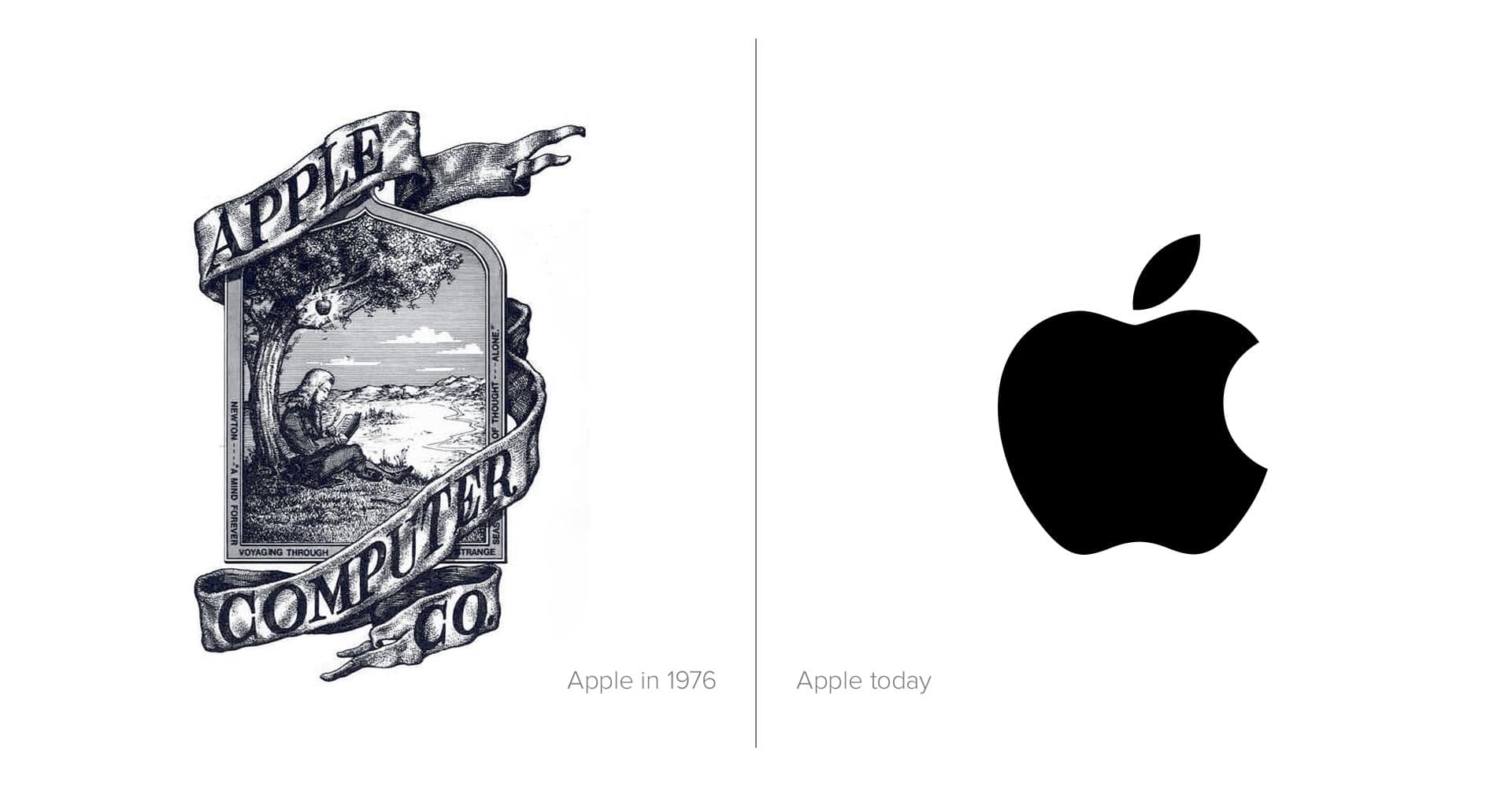
Rebranding is more than just tweaking a logo. It’s a change in the entire brand philosophy and beliefs. Although it’s a normal stage in any brand lifecycle, it’s still a risky thing to change your brand equity.
According to Wiki:
Rebranding is a marketing strategy in which a new name, term, symbol, design, or combination thereof is created for an established brand with the intention of developing a new, differentiated identity in the minds of consumers, investors, competitors, and other stakeholders.
Many famous companies have been tributes for the trap of rebranding. Their failures didn’t only impact their sales or brand image, but remained in the memory of history as a very hard to forget lessons.
GAP- cause and visual disaster

When GAP started experiencing low sales rates. The execs thought about entering the rebranding loop for the sake of saving their company. They only wanted to create a buzz not caring about other necessary elements that should exist for a rebranding process to occur. A result was a unified identity that with no strategy and a public scandal for the brand. the identity was poor and criticized for many reasons.
On top of the list came the typeface choice. Regardless of how old and traditional this font, Gap choose the same typeface as one of its main competitors, American Apparel. While everyone was expecting something different and unique, GAP have chosen something generic and with no tad personality.
Many designers around the world considered it as an insult from lazy designers and a company with a bad taste especially with the nonsense gradient and square that made the logo even more of an embarrassment. Also the parallel social media campaign crowd sourcing logo ideas was another disappointment for the brand evangelists and the professional’s community.
On 11th of October, GAP finally decided to bring back the old logo after a week of negative public comments and declared the following statement:
Ultimately, we’ve learned just how much energy there is around our brand. All roads were leading us back to the blue box, so we’ve made the decision not to use the new logo on gap.com any further. At Gap brand, our customers have always come first. We’ve been listening to and watching all of the comments this past week. We heard them say over and over again they are passionate about our blue box logo, and they want it back. So we’ve made the decision to do just that—we will bring it back across all channels.
Pepsi- strategy disaster

GAP wasn’t the only big brand that fallen to this trap, there was another big community attack on Pepsi new logo as well. But this time the rebrand attack was due to another reason. Nonsense or no strategy. After the release of the new Pepsi logo, there was a lot of comments about the similarity of the logo to other identities like: AT&T and Obama. The company behind the logo redesign leaked a draft of the thought process related to the new logo creation.
The document consisting of almost 24 pages had no mentions of soda or relation to the brand industry or target audience. And including the emoticons theory made it even more immature and childish. Apparently, there were no strategy behind the logo creation but making a new fresh identity for Pepsi.
One of the very important rules of rebranding is “if it isn’t broken, don’t fix it”. And this is exactly the opposite of what Allen group did with Tropicana juice. The heritage brand has a unique package that has been part of the brand equity for years.

When to rebrand?
Many companies go for rebranding so fast when they face a problem or issue with their business. However, rebranding is not always the solution. If your current identity is not broken, changing it a million times won’t fix your business issues. And most importantly, you need to stop hiding your business model behind the overall design.
When your competition does a rebranding, it doesn’t necessarily mean you’re under threat and you need to have it too. As long as you don’t have a reasonable cause, your efforts are aimless and without a professional guidance.
Rebranding is a long and costly process. It takes a lot of time and research to get your brand the new positioning planned in the strategy. You will have to go through a lot of versions so it’s not a shortcut way to making success. And although it might seem like your logo is old, sometimes it’s only illusion in your mind not what your brand audience think or need.
On the other hand, many companies are sometimes in desperate need for rebrabding but they don’t recognize it yet. The following is a list of the most important elements that you should make before considering rebranding:
1. When your brand doesn’t reflect your business
Your business grow with time. whether your client base expands to contains other customer segments or you go international or add new production lines into your factory. Also, in some cases, you might even acquire small companies to be added under your business umbrella which means your name must change to fit your new size.
And in other cases too, your business goals might change and even your own beliefs after reaching maturity or further exploring the market.
All of the above cases leads to drastic changes in your brand essence. which means the core values that you built the brand upon are now gone or changed.
2. When your brand assets get old

It’s normal for your website, business cards or any other material gets old with time so it might be an indicator sometimes that your business need a refreshment. maybe some logo enhancement and brand rethinking not necessarily an entire face-lift. However, neglecting such important brand messages can give the wrong impression about your brand. For instance, if you still have a flash website in 2019, that’s an issue.
3. When you need to change your prices
Whether you’re trying to lower the prices or raise them up, a rebrand can help do both smoothly without having to worry about what your audience will think or how they will perceive your production quality. Rebranding done right can be the solution for this dilemma.
4. You need to disconnect from a negative image
In some cases, your brand image might be totally corrupted. Your audience hate you because of a brand attack or any other reason such as quality issues. Rebranding can help you gain a new position in your audience minds but first, you need to solve the problem that caused that image diffusion or you will be going through the same loop again.
5. Increase your brand equity
Brand equity is the value you gain because of your reputation. It’s one of the most important intangible assets of any company. In addition, it helps with selling the brand products, building trust with audience and many other things.
Brand equities are valued against money and could reach millions of dollars. Rebrading can affect that by adding extra value to your brand like a charity cause or a competitive advantage in design so your customers would support your company more in a positive manner.
Preparing for a rebrand
Pick your creative partner
Whether you’re going to work with a branding agency or freelance, you need to work with a partner who fully understands your business needs and the point behind the rebranding decision. You should be able to share all the information with them.

And in order to set your brand clearly, you need to know every aspect of it and how it connects with each other especially if you’re a big company with lots of branches or many production lines. That’s why setting your brand architecture is an extremely important step in the rebranding process in addition to other elements that any brand identity designer will need the following:
- Your target audience
- Your business long term goals
- All the possible usage places of your new identity
People rarely come in favor for change, unless it impacts their experience for the best. When working on your rebranding process, keep that in mind and try to understand what your brand identity designer is trying to convey and stay away from trendy concepts that would make you do rebranding only after a few months.
Validate your name
This is a decision to be made with your creative partner. However, you need to think it ahead before collaborating with anyone. Depending on your case, you need to decide. If it’s a rebranding for your company, you might consider the new changes that occurred to your business model and how it might affect our naming strategy. In case of acquisition, it might be your name and the other company name or it might be a new name for both of you.
Do some talking
Your rebranding efforts can all be in vain in case your audience didn’t like it. These audience are not the consumers but also your employees, suppliers, clients and partners. The good news is you don’t have to risk it. While you’re still considering your rebranding decision, you can have conversations with all of them.
You will be doing this not just for the sake of keeping good relationships with them, but also to ensure that they will not get surprised by your new facelift and consider you a totally different business. Gather as much feedback as you can and consider every point wisely but don’t let that affect your own decisions.
Set a budget and timeline
According to your business situation and your projects timeline, select a suitable date for your rebranding efforts. It could mark the new year, a certain season or any other time. Most importantly, don’t be too optimistic or leave the time loose. Try to be as realistic as possible. for example, if your company is going to launch a new product soon, you will definitely need to have the new identity before printing the packages.
The last thing you have to consider is how you’re going to launch your new identity. In case of minor changes, your audience might not even notice it. But, if you’re going to have an entire new face-lift with logo and voice changes, you will need to provide an entry for that.

Looking at Uber, one of the most successful rebrands of the year 2018, could give you the inspiration needed. As the company found that their logo mark wasn’t familiar with its target audience, they decided to take a step back and rethink their whole identity.
During the research, Wolff Olins, the guy behind the new logo, began the exploration by traveling abroad to markets like India. Surprisingly, they discovered that the brand was mainly design for silicon valley A class. While in India, most riders and passengers couldn’t read. They found that their mark wasn’t accessible to the whole world and what distinguished their brand most was the letter U not the atoms concept of 2016.
Rebranding should be a well-thought process and taking it for granted or considering it just a logo change could lead to inefficient results and take time to think about your decisions regarding your name, identity, logo, and overall business communication.

